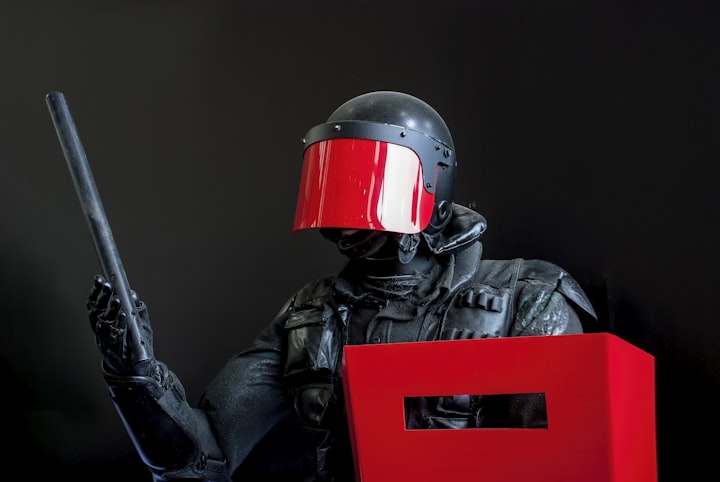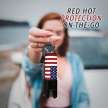Is a Police Baton a Good Self-Defense Tool?
Police Baton

A police baton, also known as a nightstick or PR-24 is a short club weapon used for crowd control or riot suppression. They are often made of wood and have rubber edges to provide a better grip. These batons often come with a handy holster that the officers can clip to their belts while they are out on patrol or inside the station. The typical use of this device is to knock people down during demonstrations, riots, and other conflicts.
Police use it when they need to stop somebody without causing them injury or death. It is also designed to be less lethal than a nightstick that officers can get on the job. One of the disadvantages of using this tool is that it does not achieve full muscle power due to moving objects at close range.
Therefore, the officer may need to strike multiple blows to subdue his or her target. These batons are generally used only when an officer's or a person's life is in grave danger and force needs to be authorized to prevent further threat.
A Description of Police Baton
The term 'baton' refers to a length of wood, metal, or plastic with one or more rigid handles attached. They may be used for self-defense and other purposes, such as controlling unruly crowds or escorting dignitaries. There are many types of baton including the nightstick and riot baton, which is typically used for subduing a crowd by striking surrounding areas with the intent to cause stun or pain.
There are also oleo-shock weapons that release an electrically charged liquid when struck by an impact weapon. These weapons can injure humans and animals when in contact with them due to their high voltage electrical conductivity which will cause severe burns on contact. The most common type of police baton is the wooden stick, which law enforcement officers often use.
The wooden batons are commonly made of wood or a composite material, but can also be made of metal such as aluminum or a steel alloy. The length of the baton depends on the intent and function. Generally, batons are made to be swung or hit with various types of strikes, including heavy blows. The length varies from about long to in excess of. These lengths vary from 7 inches (178mm) to over, depending on the task at hand.
The light police baton is generally less than tall and can be made of aluminum or plastic. The baton itself is considerably lighter in weight than other types of law enforcement batons, which makes it easier to carry for officers and easier for them to swing. In addition, the light baton may have a smaller striking surface, which prevents damage to property and to humans.
Self-Defense with a Police Baton
Self-defense is a secondary function of the police baton. It only gets brought into play when all other efforts have failed, and it's usually the last line of defense against an attacker. This article examines this role as well as examining the proper use of these batons in self-defense.
1. Determine how to safely grab the baton. If you are going to spring for a telescopic baton you'll want to take a look at the options as well as this article's selection of non-telescoping batons. If you are only able to afford a folding baton, then you will need to have a plan for removing it from storage or concealment when needed for self-defense.
2. Establish how much range and force you need for your self-defense purposes as well as how much risk of injury you are willing to accept. These two factors will determine the length of the baton and which features you should look for. You should also consider daily training in order to become proficient with using the baton.
3. Select your baton based on its length, weight, and features. In terms of length, choose a solid aluminum police baton with a proper size grip so that you can carry it easily without causing undue discomfort or posing a safety problem (since this will usually be carried in some type of concealed manner).
How to Use a Police Baton Safely?
There's no denying that when it comes to self-defense, you have a better chance of achieving your goals if you're armed. Not only can the weapon serve as a lifeline in critical situations, but it can also provide an extra level of protection by disarming opponents and striking back with a forceful blow. With living in an increasingly violent society, learning how to use a police baton is more important than ever before.
But you shouldn't use these batons in any way that can cause injury to yourself, your family, or others. They can also be fatal if used improperly. This is why it's vital to know the best way to use one for both self-defense and the protection of property.
If you're going to carry one or are already a police officer, it's important for you to know the best places and events to carry a police baton. If you're going on patrol, follow the guidelines on how to safely use a baton as well as tips on how not to startle citizens with a deadly object in hand without letting them know what you're about.
About the Creator
Mai Sophia
A Writer/blogger by day, a knife enthusiast and survivalist by night. I've reviewed a lot of products and have helped people make the right purchase






Comments
There are no comments for this story
Be the first to respond and start the conversation.